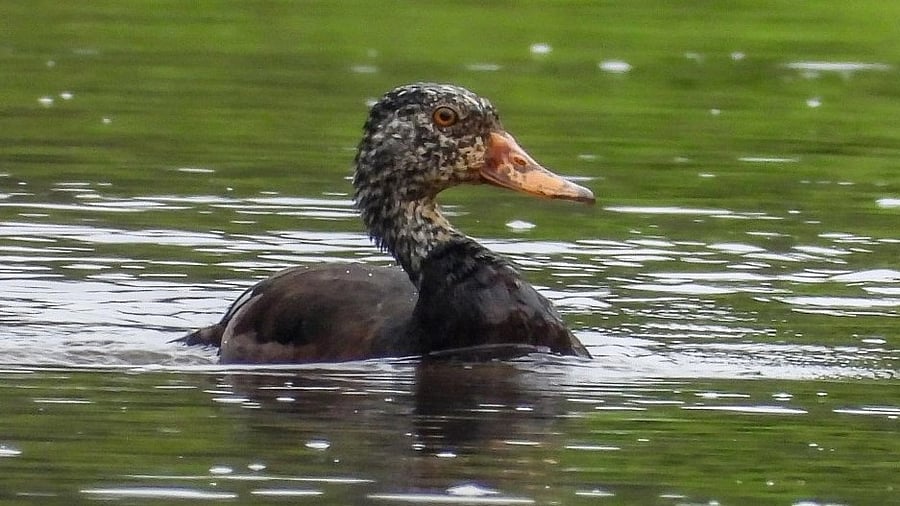
The white-winged duck, an endangered duck species and Assam's state bird.
Credit: WTI
Guwahati: Possible fluctuations in the flow of riverwater due to the construction of large dams in Arunachal Pradesh for hydro power projects have been identified as one of the threats to white-winged duck, an endangered duck species and Assam's state bird.
A document prepared for the conservation of the bird species said fluctuations in flow of rivers such as the Lohit, Dibang, Siang, Subansiri and Kameng in Arunachal Pradesh would seriously impact breeding sites of the duck in Dibru Saikhowa National Park and Nameri National Park in neighbouring Assam, two major habitats of the duck species. Locally called Deo Hanh, the white-winged duck was declared as the state bird of Assam in 2003.
"Construction of a series of large hydropower projects are going on or planned in the upstream of major rivers in Arunachal Pradesh. This will directly affect rivers and water channels downstream, eventually adversely affecting lowland forest and wetlands habitats of white-winged duck in the Brahmaputra valley," read the document, which was released by Assam Forest and Environment Minister Chandra Mohan Patowary on Friday (November 3). The document was prepared by the Wildlife Trust of India (WTI) with the help of the Assam Forest Department.
The construction of these dams will indirectly impact the duck's habitat by increasing human activity and pressure on forested areas, resulting from the loss of agricultural and habitable lands for those living downstream of the rivers, the document further said.
The White-winged Duck is an endangered species found in Southeast Asia. The species has a global population of about 1000, of which a large number (about 200-300) reside in Assam and Arunachal Pradesh. However, the document reveals that the white-winged duck's population has significantly declined over the years due to the widespread loss of forest habitats and intense hunting pressure, pushing this duck species closer to the brink of extinction.
Although Nameri and Dihing Patkai are its main habitats, small populations are also found in Namdapha National Park and Pakke Tiger Reserve in Arunachal Pradesh and in Manas National Park, Hollongpahar Wildlife Sanctuary, Dibru Saikhowa National Park, Doomdooma Dangori Reserve Forest and Upper Dihimg Reserve Forest in Assam. The white-winged duck is primarily a forest-dwelling species inhabiting small forested wetlands, pools, swamps and slow-moving streams and channels.
The document also highlighted that the drainage of wetlands within forests and their fringe areas for purposes such as fishing and irrigation poses another significant threat to the duck's habitats. "Major wetlands in Doomdooma-Dangori Reserve Forests, which was once a major stronghold of the species, are now drained dry and converted into seasonal agricultural fields. Similarly, Dibru-Saikhowa National Park has lost most of its wetlands to siltation and invasion by exotic species," it read. Loss of forest cover in the Northeast (27,000 square km between 1930 and 2013), hunting, use of pesticides in agriculture fields and tea plantations, oil spills and open cast coal-mining in eastern Assam are some other threats to the duck's survival, per the document.
Action plan:
WTI and the state forest department released the action plan (2023-2030) for conservation of the bird species as the state lacked a systematic project for the same. A fund of Rs 12 crores would be required for long term conservation, WTI said on Monday.